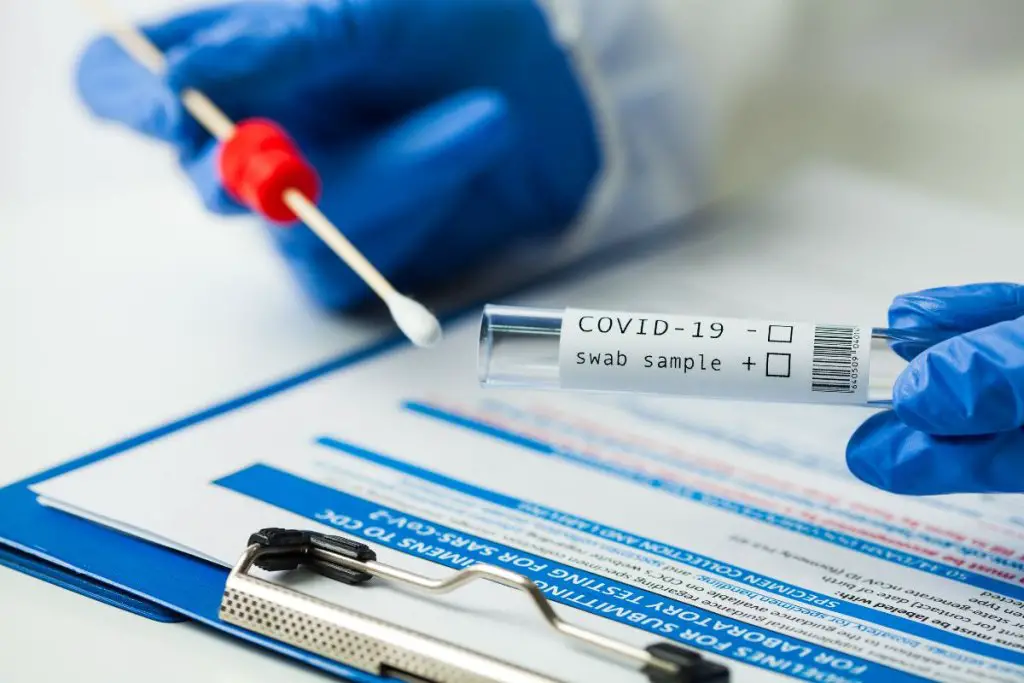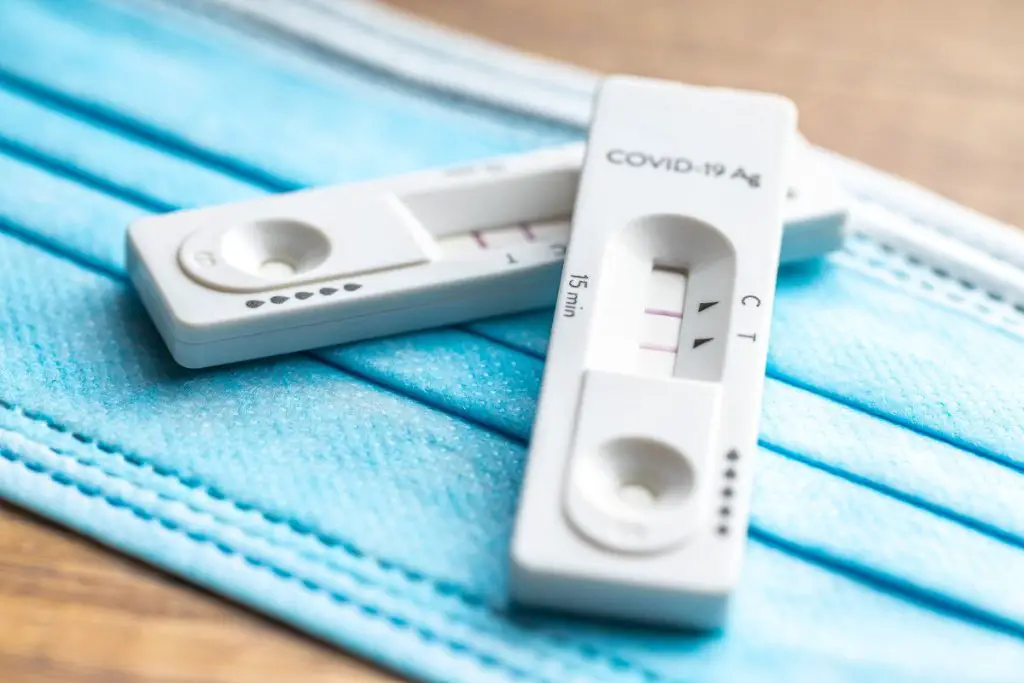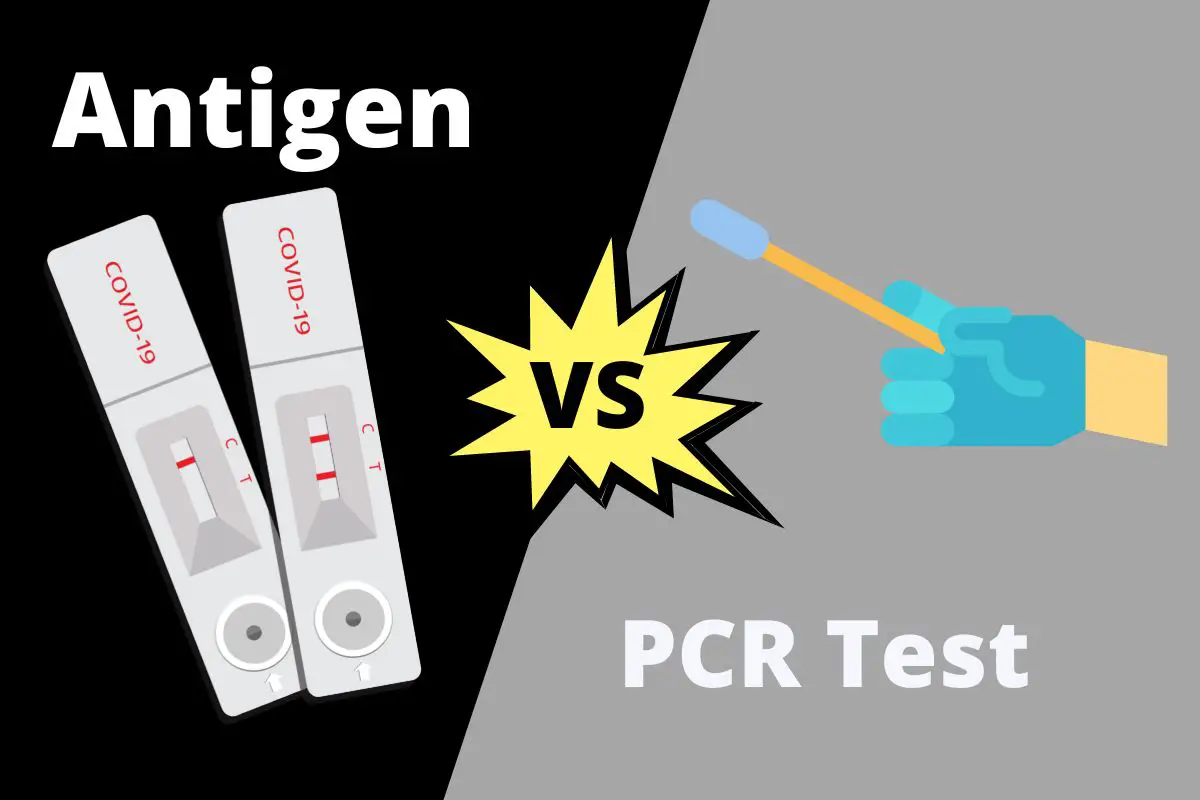The main difference between antigen and PCR test is that antigen tests are more accurate but take longer, while PCR tests are rapid, but are less accurate.
Read on to discover the significant differences between the two types of COVID-19 tests.
| Antigen Test | vs | PCR Test |
| Often employed in healthcare facilities as mass screening programs to identify SARS-CoV-2 infection ASAP. | Meaning | Refers to the reverse transcription-polymerase chain reaction assay. Industry-recognized method for identifying viral illnesses, including Ebola and SARS-CoV-2 virus attacks. |
| Identifies the SARS-CoV-2 virus’s membrane proteins | Function | Focuses on virus-specific genetic material |
| Less prevalent due to technicalities | Availability and administration | More commonplace due to ease of access |
| More accurate but takes time | Limitations | Less precise, but it is quick |
Table of Contents
Difference Between Antigen and PCR Test
Meaning
The term RT-PCR test refers to the reverse transcription-polymerase chain reaction assay. It’s the industry-recognized method for identifying viral illnesses, including Ebola and SARS-CoV-2 virus attacks.
The RT-PCR test has high sensitivity. This means that the likelihood of this test returning a positive result increases if a person has a COVID-19 infection. Even when a person has completely healed, they might still find any remaining conditions.
How the Test is Performed
The pathologist separates the RNAs (both host and viral) from the specimen secretion after obtaining a specimen from the patient. It uses a reverse transcriptase enzyme and chemical amplification to produce the virus’s genetic information (RNAs).
Using fluorescent dye, it’s possible to determine whether or not the virus is present after retrieving the genetic material. Fluorescent coloring takes up to 8 hours to decide whether the specimen is negative or positive.
Rapid antigen assays can find the protein on the Coronavirus’s outer surface. The duration of a test from start to finish is 15 to 30 minutes.
You might hear this referred to as a point-of-care test is an antigen test. It implies that you may carry it out anywhere, such as in a hospital, clinic, or home.
Antigen tests are often cheaper than PCR tests. An antigen test is a valuable tool for tracking infection in those who have frequent contact with COVID-19-infected individuals, despite being less precise than the RT-PCR test.
Rapid antigen test screenings are often employed in containment areas or healthcare facilities as mass screening programs to identify SARS-CoV-2 infection as soon as possible. It successfully aids in the prompt deployment of infection prevention measures.

Using an Antigen Test
Antigen tests are similar to pregnancy tests in that they both come with a kit.
Step 1: Wash your hands with soap and water for 20 seconds before collecting the sample. Use hand sanitizer as an alternative.
Step 2: You may take a nasal swab and then a throat swab to the extraction tube.
Step 3: Then, touch the swab to the test strip.
Be sure to follow the directions on the package as instructed.
Function
Antigen testing identifies the SARS-CoV-2 virus’s membrane proteins. The manufacturers make these tests utilizing SARS-CoV-2 antibodies, which bind to the appropriate viral antigens if a sufficient amount of antigen is present.
Molecular testing, on the other hand, focuses on virus-specific genetic material. An example of a molecular test is the reverse transcription polymerase chain reaction (RT-PCR), in which enzymes turn SARS-CoV-2 RNA into DNA, and primers amplify or create copies of the genetic material to allow detection.
Antigen tests require that sufficient target levels be naturally present in the sample, while amplification enables the detection of even minute amounts of the virus.

Other Ways to Test for COVID-19
Further molecular tests use nucleic acid amplification methods.
- Nicking endonuclease replication reaction (NEAR)
- Loop-mediated isothermal amplification (LAMP)
Availability and Administration
This test actually tests for Coronavirus, and it provides PCR findings for the virus in less than 30 minutes using a convenient, portable station that connects to a regular wall socket.
PCR Testing in a Lab
PCR testing often requires a lab to process essential samples.
Lab-based PCR testing is usually only present in medical facilities like hospitals, clinics, and urgent care centers due to the necessity for specific equipment. They gather the samples and, if available, laboratories handle them on-site or transport them elsewhere for processing.
Point-of-Care Testing
You can get point-of-care antigen and molecular testing results without sending samples to a lab. Some healthcare professionals can give you this choice. Some platforms are sold over-the-counter (OTC) for immediate purchase decisions and self-administration.
OTC antigen screenings have been a mainstay of school screening procedures since they are quick, easy to use, and reasonable. Employers often use them to test large staff groups before events.
Lab-based PCR testing is often limited to medical environments, such as hospitals, pharmacies, and urgent care centers since they need specialized equipment and have difficulties processing many tests.
Limitations
PCR’s Drawbacks
While a PCR test is ideal for identifying COVID-19, actually getting one is not always straightforward. You may need to wait a few days to learn if you test positive or negative after a PCR test since it has to be performed by a medical professional and doesn’t yield findings immediately.
These tests are not permitted to determine the length of infectiousness, even though they work best when used to identify COVID-19 early in the course of the disease.
After COVID, PCR testing might sometimes remain positive for weeks. Due to the PCR test’s extreme sensitivity, doctors may even be able to detect dead viruses.
Antigen’s Drawbacks
In contrast to the PCR test, the antigen test can only reveal if you are infected with an active virus. The PCR test detects asymptomatic patients and small quantities of the virus more accurately than the fast antigen test.
Rapid testing is less reliable and more likely to result in a false negative result. Additionally, since the test only detects whether the virus is operational in your body, asymptomatic cases—those in which a person exhibits no symptoms—are more challenging to see with the antigen test.
Most likely, you won’t have a choice in which test you receive if you go to a health professional to get tested. This is due to various factors, like which test is more accessible at the time and how likely it is that you have COVID-19.
If you enjoyed this article, check out our post comparing haploid and diploid.

